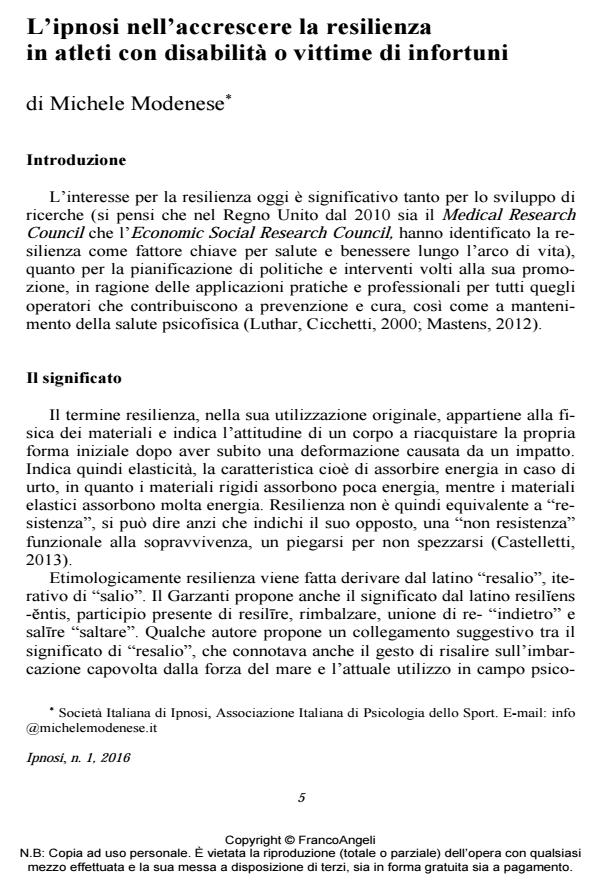L’ipnosi nell’accrescere la resilienza in atleti con disabilità o vittime di infortuni
Journal title IPNOSI
Author/s
Publishing Year 2016 Issue 2016/1
Language Italian Pages 9 P. 5-13 File size 173 KB
DOI 10.3280/IPN2016-001001
DOI is like a bar code for intellectual property: to have more infomation
click here
Below, you can see the article first page
If you want to buy this article in PDF format, you can do it, following the instructions to buy download credits

FrancoAngeli is member of Publishers International Linking Association, Inc (PILA), a not-for-profit association which run the CrossRef service enabling links to and from online scholarly content.
The author presents a brief overview of the concept of resilience, a term borrowed from physics of materials and only recently investigated by psychology. Resilience in psychology and in particular in sport psychology will be underlined the fundamental elements, the result of a convergence of research and studies, which can be recovered and used to help with the application of hypnotic techniques. Then three situations will be presented by field work, two accident victims with athletes and a case of disabled athlete, in three different sports.
L’autore presenta una breve panoramica del concetto di resilienza, termine mutuato dalla fisica dei materiali e solo di recente indagato dalla psicologia. Della resilienza in psicologia ed in particolare in psicologia dello sport, verranno sottolineati gli elementi fondamentali, frutto di una convergenza di studi e ricerche, che possono venire ripresi ed utilizzati in un percorso di aiuto con l’applicazione di tecniche ipnotiche. Verranno presentate poi tre situazioni di lavoro sul campo, due con atleti vittime di infortunio e un caso di atleta disabile, in tre discipline sportive diverse.
Keywords: Hypnosis, sports psychology, resilience, accidents, disability
, L’ipnosi nell’accrescere la resilienza in atleti con disabilità o vittime di infortuni in "IPNOSI" 1/2016, pp 5-13, DOI: 10.3280/IPN2016-001001